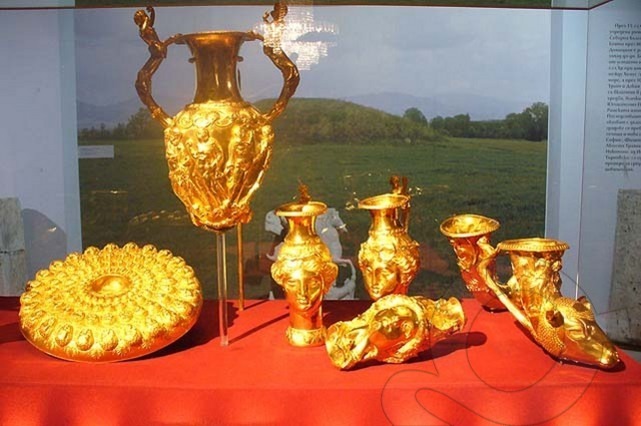In the cold morning of December 8, 1949, brothers Pavel, Petko and Mihail worked together in the yard of the roof-tile factory in the town of Panagyurishte. While digging, one of them noticed something glossy in the soil. This was the glimmer of the nine containers from the Panagyurishte treasure. They are made of pure gold and their total weight is a little over six kg.
The biggest container is an amphora – rhyton. Seven smaller rythons, three of which in the shape of animal heads, and three with the shape of Amazons also make up the treasure. The seventh smaller rhyton is similar to a purse in the shape of a goat. The final container is a vial. There is an inscription on the vial saying that it was made in the city of Lapsakos at the
The treasure dates back to the 3rd century BC and features rich gold decoration representing Greek mythological scenes. Dishes were used for ritual purification of liquids among which wine. Wine was probably poured from one container into the other. Historians believe some dishes are missing.
These six kg of gold have their breathtaking charm and beauty that is difficult to describe. An exact replica has been put on the display in the Panagyurishte museum. The original can be seen in the National Museum of History in Sofia, whenever not taken abroad.

